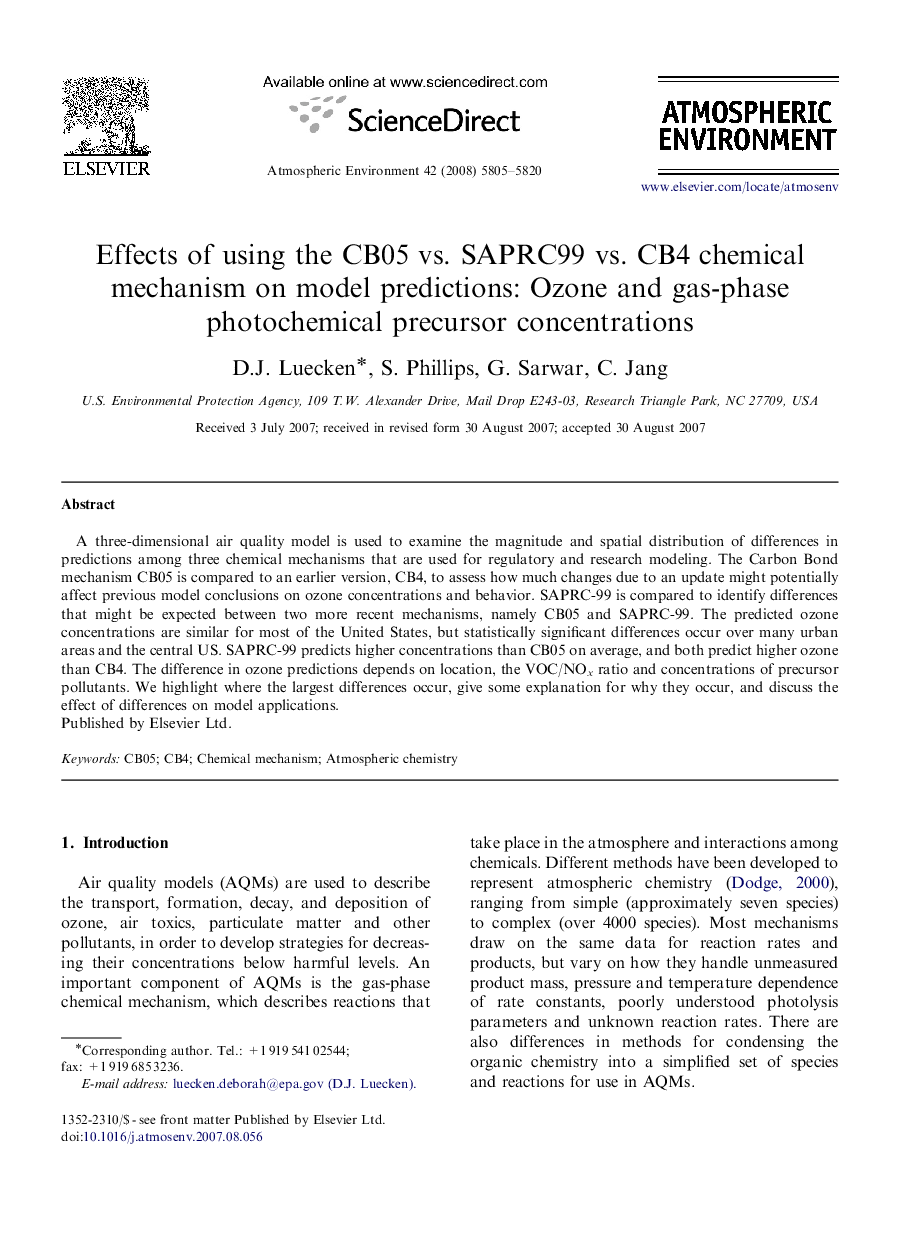| Article ID | Journal | Published Year | Pages | File Type |
|---|---|---|---|---|
| 4442668 | Atmospheric Environment | 2008 | 16 Pages |
A three-dimensional air quality model is used to examine the magnitude and spatial distribution of differences in predictions among three chemical mechanisms that are used for regulatory and research modeling. The Carbon Bond mechanism CB05 is compared to an earlier version, CB4, to assess how much changes due to an update might potentially affect previous model conclusions on ozone concentrations and behavior. SAPRC-99 is compared to identify differences that might be expected between two more recent mechanisms, namely CB05 and SAPRC-99. The predicted ozone concentrations are similar for most of the United States, but statistically significant differences occur over many urban areas and the central US. SAPRC-99 predicts higher concentrations than CB05 on average, and both predict higher ozone than CB4. The difference in ozone predictions depends on location, the VOC/NOx ratio and concentrations of precursor pollutants. We highlight where the largest differences occur, give some explanation for why they occur, and discuss the effect of differences on model applications.
